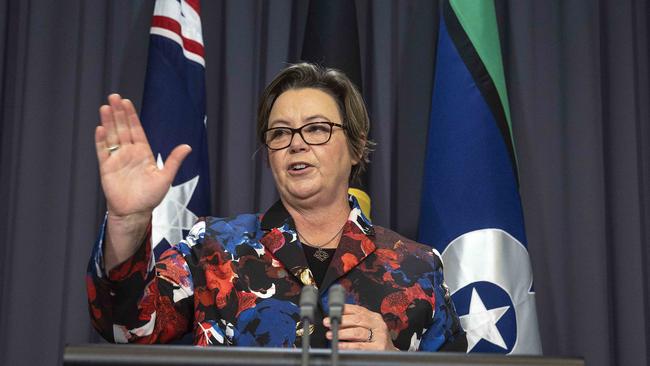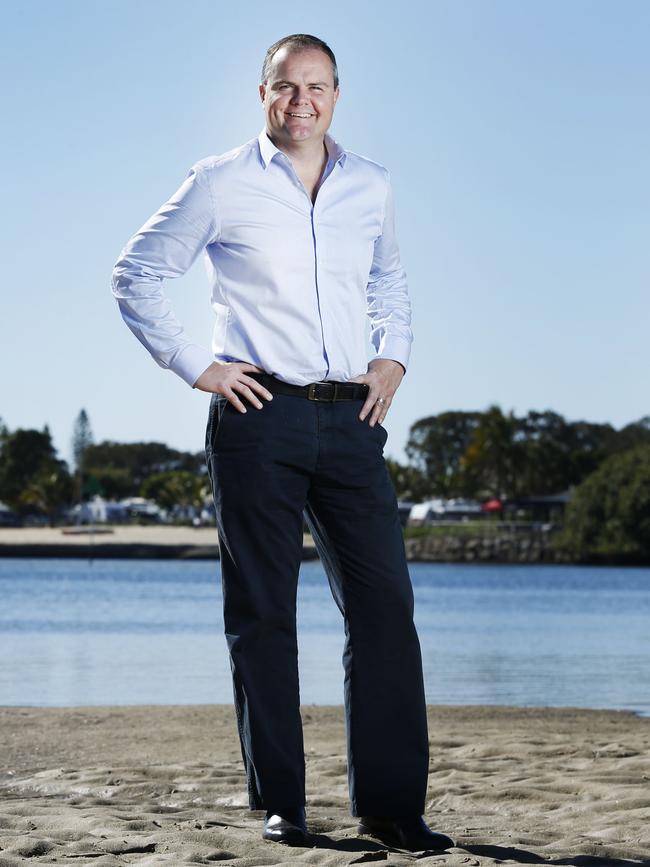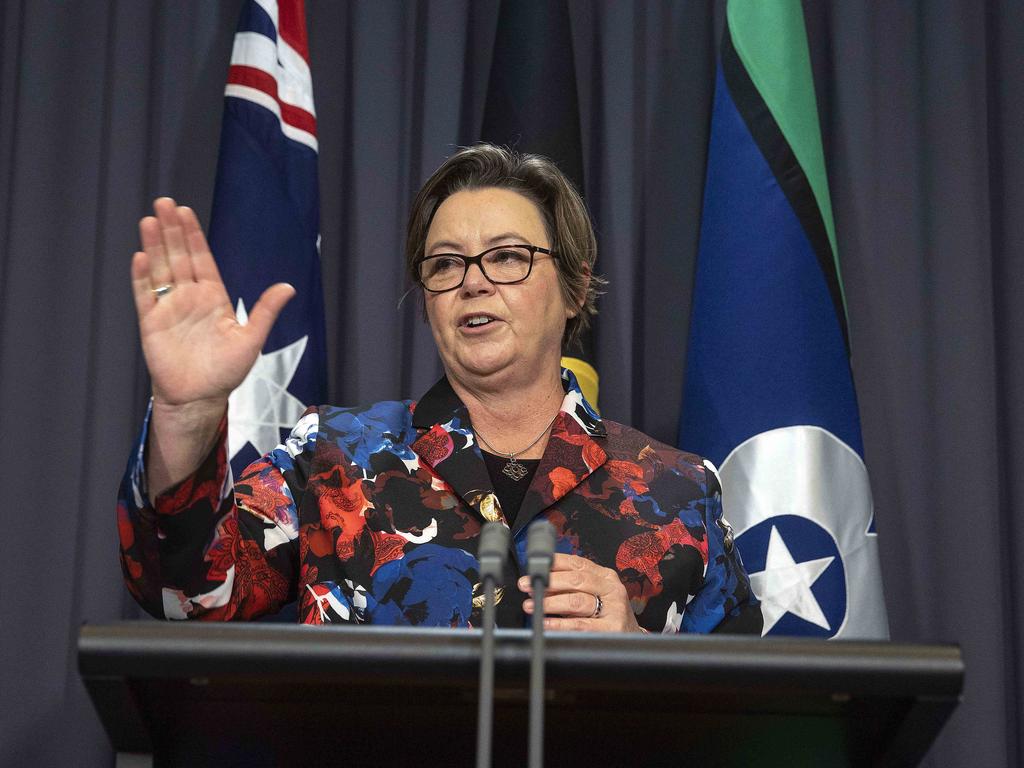Labor warns the days of cheap gas are over
Australians will be paying historically high gas bills for years despite the government striking a deal with major LNG producers to prevent domestic supply shortfalls.

Australians will be paying historically high gas bills for years despite the government striking a deal with major LNG producers to prevent domestic supply shortfalls, with experts warning the early closure of coal-fired power plants would put the stability of the electricity grid at risk.
Resources Minister Madeleine King warned on Thursday that gas prices would not return to pre-Ukraine war levels of less than $10 a gigajoule despite LNG exporters agreeing to provide an extra 157 petajoules for the domestic market in 2023.
With the government facing pressure from the Greens and environmental groups over new fossil fuel projects, Ms King also cast doubt over the future of new gas developments in Australia and backed greater investment in renewables to deliver the nation’s future energy needs.
The prospect of high gas prices for the foreseeable future comes as AGL pulled forward the closure date of its Loy Lang A power station to 2035, accelerating the exit of the 2210MW plant by a decade. The move risks putting additional pressure on the National Electricity Market and increasing costs for consumers.
Announcing a deal with east coast LNG exporters to shore up domestic supply next year, Ms King said the heads of agreement – signed by Australia Pacific LNG, QGC and Gladstone LNG – would ensure “Australians continue to have access to secure and reliable gas”.
“Given the agreement means the projected shortfall will be avoided, I am satisfied I do not need to take steps to activate the Australian Domestic Gas Security Mechanism,” she said.
She added there was no doubt that prices were “very unlikely to return to the low points of like $6 or $8 or even $10”.
“I do expect with the increased supply that there will be downward pressure on prices,” she said.
Wholesale spot prices were running at about $20 a gigajoule in east coast markets on Thursday, up from about $10 a gigajoule in February but down on the more than $40 in July.
The Albanese government last month opened bidding for exploration in 21 offshore gas sites, but Ms King clarified on Thursday that this would unlock the expansion of existing facilities rather than entirely new developments. “It does seem unlikely that there will be more LNG facilities built like on the scale of Gladstone,” she said.
With the government needing to find new forms of dispatchable energy to replace coal-fired power stations, Ms King said supply was important to bring the price of gas down but she reaffirmed the need to cut emissions, with Labor having committed to achieving a 43 per cent reduction on 2005 levels by 2030.
“The world is changing and this is an economy that is moving to decarbonise,” she said.
“Gas will continue to play a part in the energy mix for some time but we need to be careful about how we plan this transition ... The really important thing is we continue to get investment in renewables because they are a secure form of energy.”
The government said it remained supportive of exploration in the Beetaloo Basin in the Northern Territory, with Ms King noting Tamboran Resources was “very much active in that space”.
Grattan Institute director Tony Wood said he did not believe gas prices would ever reach $10 a gigajoule, putting pressure on the viability of some manufacturers.
Mr Wood also poured doubt on the chances of governments successfully replacing the energy supply from coal-fired power stations without a massive cost to taxpayers or consumers.
“The scale and the speed of which stuff has to be built, and the risks of doing it on time, are just horrendous,” Mr Wood said.
“We are either not going to meet the targets, or we are going to have huge costs, or we are going to risk supply. Now I think supply is the least likely, I think people will panic about that and make sure that we won’t.”
AGL’s announcement to fast-track the closure of its Loy Yang A station dovetails with Queensland Premier Annastacia Palaszczuk’s decision to phase out coal-fired power in the sunshine state by 2035.
Queensland’s fleet of state-owned generators were not due to be fully retired until 2046.
RBC Capital Markets analyst Gordon Ramsay said on Thursday AGL’s plan to close Loy Yang A and its Bayswater plant in the NSW Hunter Valley in 2033 could pose a risk to the reliability of the grid. “If there has not been enough investment in grid firming and grid-stability services to maintain grid security prior to the proposed closure date of Bayswater and Loy Yang A, then the heightened risk to grid security may lead to intervention by the market operator to continue the operation of the coal-fired plants beyond their proposed closure date,” Mr Ramsay said.
AGL released the long-awaited reset of its strategy on Thursday, saying it planned to exit coal-fired generation by the middle of 2035. It set an interim target of owning 5GW of renewable and firming assets by the end of the decade. Its plan also included construction of a massive portfolio of renewable energy and battery assets capable of replacing the company’s coal-fired fleet.
The company said it would need to find up to $20bn in capital spending to realise its decarbonisation plans over the next 12 years as it looks to develop 12GW of renewable energy assets by the time it finally exits coal.
The 12GW renewable energy plants would include 6.5GW of primary generation, such as wind and solar farms, plus 5.5GW of firming capacity including batteries and pumped hydro. The decision brings AGL into line with demands from Atlassian billionaire Mike Cannon-Brookes — who holds 11.3 per cent of the energy giant’s shares — that the company wind down its involvement in fossil fuel generators.

Energy Minister Chris Bowen, who said before the election that Labor’s policies would not cause coal generators to close early, said the government needed to “ensure that these closures are properly managed and that we invest in the firmed dispatchable renewable energy, along with storage and transmission”.
Opposition energy spokesman Ted O’Brien said the AGL decision was a disappointing outcome for households and businesses and would leave a “gaping hole in Australia’s electricity market, exposing the grid to blackouts and runaway power prices”.
Australian Petroleum Production and Exploration Association chief executive Samantha McCulloch said the deal struck between the government and LNG exporters “confirmed the industry’s commitment to ensure domestic gas supplies while fulfilling obligations to trading partners and investors”.
“The industry has always been committed to delivering reliable and competitively priced gas supplies to the domestic market and today’s agreement confirms that,” Ms McCulloch said.







To join the conversation, please log in. Don't have an account? Register
Join the conversation, you are commenting as Logout